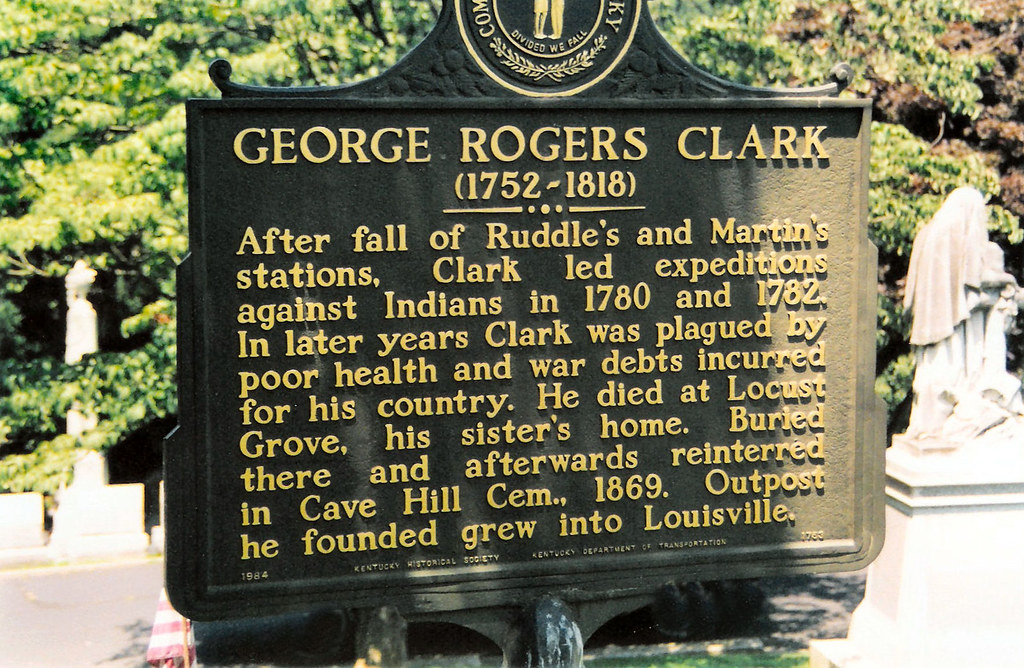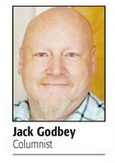George Rogers Clark battled Indians, elements in 1776
Published 10:57 am Monday, December 18, 2023
By Jadon Gibson
Contributing Columnist
In June of 1776, Harrodsburg settlers elected George Rogers Clark and John Gabriel Jones delegates to the Virginia Assembly. They immediately prepared to set out for Williamsburg, Virginia, as they knew the importance of haste. The British had the Indians astir and they were preparing to mount attacks in the area that would later become Kentucky.
Clark and Jones set out without waiting for others because they felt reasonably safe. The Wilderness Road had been safe to the south in recent months. On the second day however they began to see Indian signs and became more alert. The following day Jones’ horse gave out so most all of his belongings were packed on the back of Clark’s mount.
Clark rode at times but mostly he and Jones trod along with the horses in tow. It rained heavily and although the downpour slowed at times, it continued for three days. They were reluctant to make a fire to dry out lest it would send a sign that would bring Indians to their camp.
The two men developed what was commonly known as “scald feet.” It was a malady of early longhunters and pioneers that was caused from having their feet wet for an extended period of time. Clark said it was the most miserable he had been before or after.
They continued on their journey however as they hoped to rest and receive treatment in Powell Valley after passing through the famous Cumberland Gap.
Their hearts sank upon their arrival when they found the outpost vacant and partially burned. Clark heartened Jones by suggesting to him that the residents were probably at Martin’s Fort a few miles away.
They set out for Martin’s Fort, present day Rose Hill, Virginia, traveling through the brush to lessen the likelihood of encountering Indians. Their feet were in no condition to take the harsh treatment, however, and the men had to relent to traveling on the main road. It wasn’t a lot better.
Periodically they heard gunfire and surmised it was residents of Martin’s Fort on hunting forays. Upon arrival at the fort however they found it deserted. The gunshots they heard were from Indians. They felt they were alone at the mercy of the Indians and their feet were seriously inflamed.
They decided their only hope was to remain and picked the best remaining cabin. This would enable them to dry out their belongings and with “oil and ouse made from oak bark” their feet would cure in a few days.
They found the door tightly secured so Clark climbed to the top of the cabin and flung chimney parts to the ground until it was low enough for him to climb down into the cabin. Inside he found tables, chairs and bedding.
The men had rifles and pistols and were confident they could defend their position against up to 10 or 12 Indians so they threw caution to the wind and decided to build a fire to dry themselves and their equipment. Clark knew the Indians wouldn’t storm their position because it would leave them so vulnerable.
They noticed several hogs around the corn cribs and Clark sent Jones to kill one.
“Use your sword, Jonesy,” Clark implored him. “We won’t use our firearms until we have to. We won’t give any more signals than we need to.”
After awhile Jones returned with meat from the hog and then proceeded to fetch a keg of water. He and Clark brought in some wood and corn. They made portholes through which they watched for Indians and dressed their feet with oil. While doing this they cooked their dinner.
The men spread their arms and ammunition on the table, agreeing that Jones would reload the weapons while Clark would keep an eye on the perimeter and fire at intruding Indians. They decided if the Indians burned them out they would attempt to escape through the roof.
They immediately went to full alert after hearing a horse bell approaching on the road. They were sure the Indians had found them.
When the settlers noticed smoke coming from the cabin they took cover in case there were Indians inside. Clark and Jones soon yelled out their identities causing their dread to be replaced with joy. The tense situation abated.
After recuperating Clark and Jones joined the men in their return across Walden’s Ridge and on to the settlements.
Clark and Jones had other plans and continued on to Williamsburg. Ironically, upon their arrival they found the assembly had already met and adjourned.
John Gabriel Jones returned to Holston to join the force being raised to resist the Cherokees.
George Rogers Clark called on Governor Patrick Henry who lay ill in his Hanover home. He explained to him the plight of the Kentucky settlers.
Jadon Gibson is from Harrogate, Tennessee. Thanks to Lincoln Memorial University, Alice Lloyd College and the Museum of Appalachia for their assistance.
No cutline for 1
George Rogers Clark






